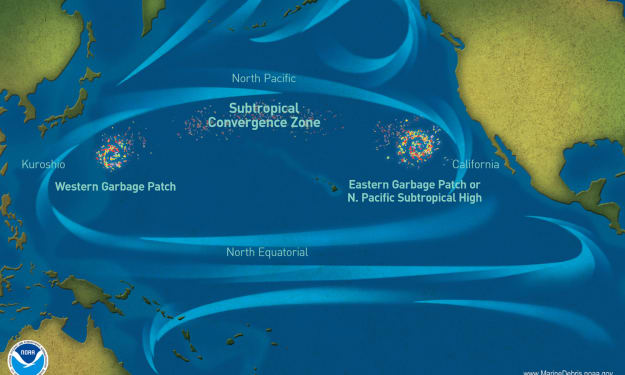Chilling Revelations: Alarming Finds Beneath Antarctica's Ice
Frozen Fears Under the Ice

The Earth is filled with hidden mysteries. Humans have barely scratched the surface of one of these mysteries, the freezing country of Antarctica. But what happens when all the ice melts? What kind of secrets lie in wait in Antarctica's Sub-Zero areas? The region's extreme cold and harshness have prevented humanity from exploring much, but what we have learned so far is both incredibly interesting and terrifying.
Here are a few shocking discoveries from Antarctica that transformed everything.
World's Oldest Pyramids
Pyramids are most commonly associated with Egypt's warm regions, where the Pharaohs resided and reigned. What if Antarctica formerly had a society that built and lived in pyramids to survive the severe environment? Mainstream geologists have long struggled to explain how life could have flourished in Antarctica's harsh environment, but this discovery may provide an answer.
In 2016, satellite photography revealed pyramid-like structures in Antarctica, similar to those in Egypt but larger. These structures show that an ancient culture once flourished in Antarctica, with their signs now buried beneath the snow. The structures' location in the Ellsworth mountain range provides opportunities for exciting historical findings.
With all of the evidence, it seems fairly probable that an entire civilization previously existed there. Some geologists, however, contend that the Ellsworth mountain range's pyramid-like shape is merely the range's peak.
Ancient Meteorites
Humans were not the first civilizations to thrive in Antarctica in the past; scientists have discovered significant evidence that alien life once existed in the region. This conclusion is based on the countless meteorite showers that have struck Antarctica. Meteorites can be found throughout the world, but they are especially abundant in Antarctica. The first meteorite was discovered there in 1912, and since then, many meteorite-rich locations have been located around the continent. The cold, dry conditions preserve these stone bits, making them simpler to find on the huge ice expanses.
In particular, East Antarctica is known for having its surface covered with a dense concentration of meteorites, which have been part of the continent for billions of years. More than 20,000 samples have been collected, and the number continues to rise. The largest meteorite ever discovered in Antarctica weighed 18 kilos. Furthermore, researchers detected a fragment of Mars in the area, indicating a high level of intergalactic activity with no other credible explanation.
UFO Sightings
As previously stated, Antarctica is recognized for its high level of alien activity. In addition to the frequent meteor showers, astronomers have discovered other spacecraft in the region that differ significantly from Earth-made technology. Because Antarctica is so isolated and difficult to access, researchers have used satellite photography to identify landforms and markings that indicate extraterrestrial presence. Despite these findings, there are no definitive explanations for the evidence of crashed spacecraft or the countless annual UFO encounters in the vicinity. Because of its vast seclusion from human settlement, UFO enthusiasts all over the world believe Antarctica is an ideal site for extraterrestrials to build a base on Earth, and there is plenty of evidence to back this up.
Third Man Factor
The Third Man Factor is not restricted to Antarctica; it may occur anywhere. However, explorers in Antarctica have described unusually strong experiences with this phenomenon. The Third Man Factor refers to feeling an overwhelming presence during times of hardship, which frequently provides advice and a sense of protection. The severe environment and irregular hours of daylight and darkness in Antarctica cause many people to have hallucinations, which could explain this phenomenon. Explorers have described seeing shadows cast by nothing across the region's vast, empty landscapes.
For instance, the explorer Ernest Shackleton and his team experienced this during their journey to South Georgia Island. After a grueling trek, they believed a mysterious presence was walking alongside them, making their group feel like four instead of three. They walked for 36 hours over mountains and glaciers, all convinced they had an unseen companion. Since then, many who have been lost or struggling in Antarctica have reported similar experiences of a guiding presence. While this might be due to the psychological stress of the environment, it also seems uniquely tied to the Antarctic region itself.
Underground Lakes
Anyone with a basic understanding of geography knows that lakes and oceans are distinct bodies of water, yet Antarctica defies the norms. Scientists suspected in 1970 that a unique ecology existed in Antarctic waters, hidden behind three kilometers of ice. They identified approximately 400 subglacial lakes produced during Antarctica's split from the ancient supercontinent Gondwana. These lakes, including Lake Vostok, do not freeze due to underwater pressure. The biggest breakthrough occurred in 2014 in Lake Whillans, where scientists discovered whole ecosystems of microbes that exist without sunlight and rely on methane and ammonium for energy. This reveals a complex network of lakes, rivers, and volcanoes beneath the ice, posing huge hurdles for researchers.
Rainforests and Fossils
The Antarctic region used to be home to rainforests. Given the current environment, it's tough to imagine tropical plants and critters flourishing there, yet it is feasible. Before the Ice Age, Antarctica was a warm tropical region with huge rainforests, and some believe it supported entire civilizations. This notion is reinforced by the discoveries of fossilized wood, tropical trees, and leaf impressions, all of which point to the existence of rainforests.
Furthermore, scientists have discovered countless remains of marine animals, birds, and even dinosaurs from the Cretaceous Period, indicating that the land was once warm. In addition, the site has fossils of a beetle species that lived approximately 20 million years ago, an insect that could only have existed in a warm climate. These findings have sparked concerns that Antarctica may yet contain rainforests, potentially home to new species and civilizations.
Ice Holes
In 2017, the polynya, a hole the size of Ireland, emerged in Antarctica, stretching 78,000 kilometers. These holes, comprised of ice and dust, contain rock particles and bacteria that absorb heat and melt the ice. They occur as a result of abnormal ocean conditions and powerful storms, posing serious environmental risks. Scientists believe that as the climate changes, these gaps will become more widespread, perhaps leading to serious effects.
In conclusion, the discoveries beneath Antarctica's ice reveal a world of mysteries and possible dangers that challenge our understanding of the planet. Antarctica continues to surprise and interest scientists and explorers with its ancient civilizations, alien activity, surprising ecosystems, and geological abnormalities. These results add to our understanding of Earth's history and potential extraterrestrial links and highlight the precarious balance of our planet's ice realms and the critical need for careful stewardship of these delicate ecosystems. As research and exploration continue, Antarctica promises to reveal even more secrets that could change our understanding of the planet and our place in it.
About the Creator
Enjoyed the story? Support the Creator.
Subscribe for free to receive all their stories in your feed. You could also pledge your support or give them a one-off tip, letting them know you appreciate their work.






Comments
There are no comments for this story
Be the first to respond and start the conversation.